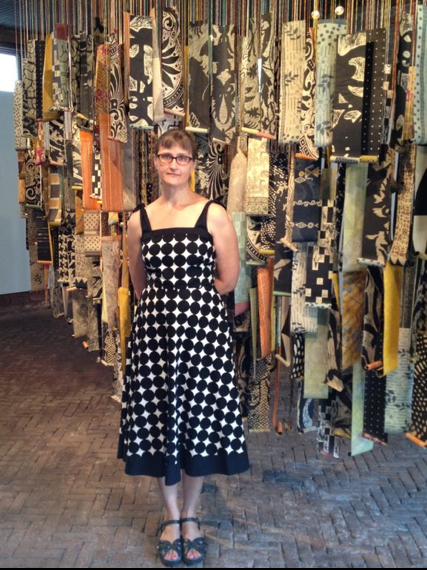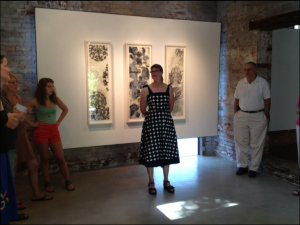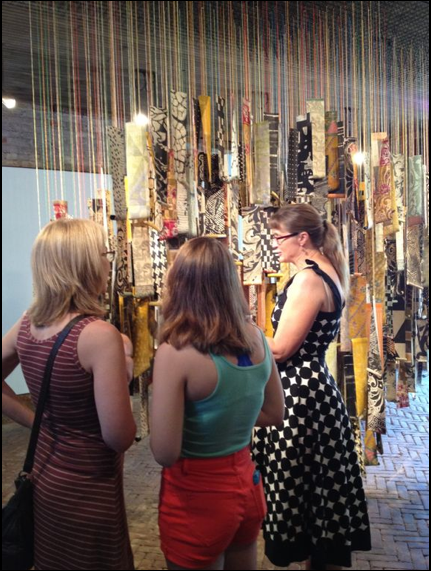On June 30, 2012, Theresa Cole gave an artist talk at whitespace discussing her show titled Between Origin and Present. By discussing the origins of her own artistic point of view, describing her affinity for pattern and texture, and explaining the sources of her patterns in the show, Cole guided the audience through her series of prints, as well as the installation piece, Curling In On Itself. Cole’s attraction to pattern led her to India, where she was able to view a different system of patterns and imagery than the ones that provide the rhetoric of her own life. The direct sources of these Indian patterns included stone carvings and sari fabric patterns. Cole documented these found patterns, as well as images of indigenous flora and fauna, in photographs, and then by breaking down the patterns into basic curves and lines, the artist intended to contemporize the ancient and natural forms. The resulting series of printed works focuses on the repetition, balance, and order that systems of patterns provide.
The technique used in these prints allows for a heavy application of ink, producing the velvet quality attributed to the prints, as well as providing the potential for ghost prints, which occur after the first run through the press. Cole usually only uses one plate in the printing, and instead creates depth by employing The proportions of the prints resemble microscope slides, relating to the artist’s idea that pattern serves as a slice or cropping of a cultural rhetoric.
In the second room of whitespace, Cole had an installation piece, made up of hanging prints, backed with scrap sari material. This piece was made while Cole was in India. Cole originally encountered scrap sari material on a previous trip to India, when the artists she was working in a print shop with would use old saris to clean up. The experience surprised Cole since she sees the saris to be their own works of art, in the intricacies of the patterns as well as the system behind the patterns. When Cole returned to India, she brought with her over two hundred pieces of Japanese kizo paper that had been printed with around fifty patterns taken from Cole’s personal library. The saris were then used to back the kizo paper, both to provide more substance and weight to the elements that would eventually hang, as well as to juxtapose two civilizations and pattern systems. Sari scraps are also used traditionally as backing in scroll paintings of great Indian epics like the Ramayana. Cole again referenced the narrative scroll by then curling each pair of sari and kizo paper under itself.
Cole originally intended to hang the piece somewhat linearly on a wall, but during production the piece grew in mass and dimension. Before this showing at whitespace, the piece was presented in positions that did not allow circumambulation, but the presentation at whitespace allowed viewing from all sides of the art.


